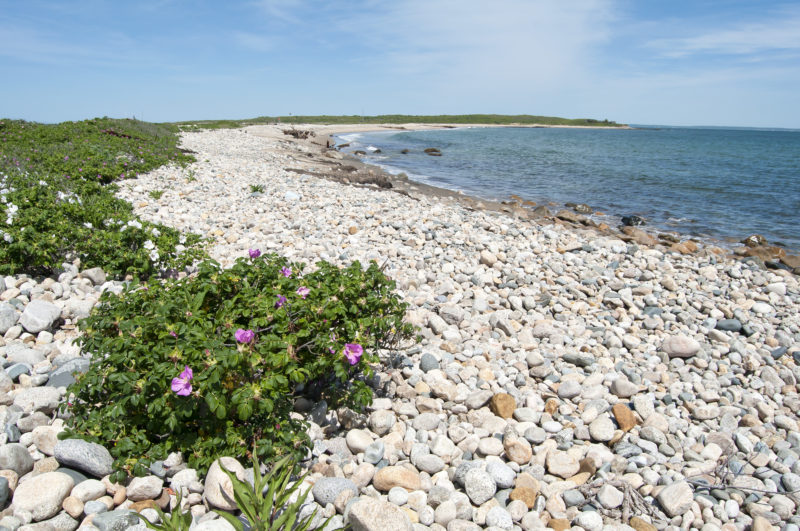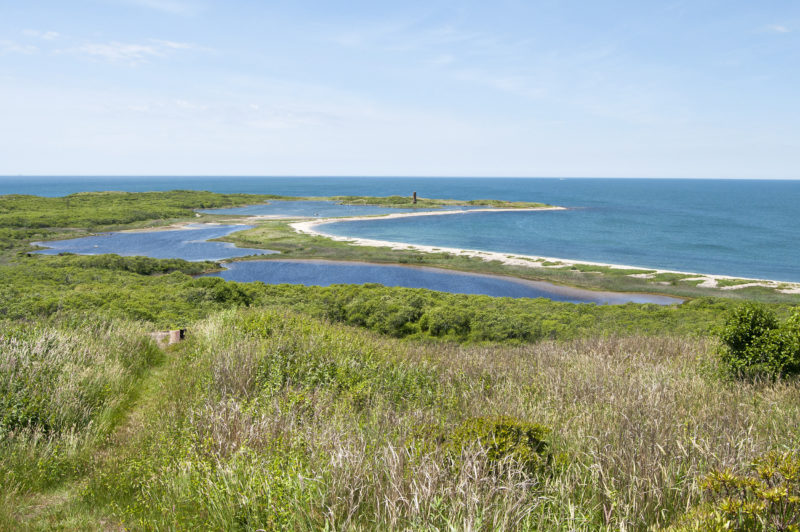$1.4 million grant for Cuttyhunk pushes campaign close to 90 percent of the way to success
We are now just $1 million away from saving Cuttyhunk Island’s pristine beauty forever.

The low dunes along Canapitsit Neck, or Barges Beach, provide exceptional habitat for a wide variety of birds.
Through a program designed to promote climate change resilience, the Commonwealth of Massachusetts has awarded $1.4 million to the Buzzards Bay Coalition to purchase and protect 68 acres of critically important barrier beach, marshland and upland habitat on Cuttyhunk Island.
“This is a once-in-a-lifetime opportunity to save a very special part of the Massachusetts coastline. Everyone realizes this is our one chance to save Cuttyhunk, and we’re seizing it,” said Mark Rasmussen, president of the Coalition and Buzzards Baykeeper®. “We have just $1 million left to raise by June 30 to close the deal on saving the island, and with this grant, I’m more confident than ever that we’ll make it.”
The grant was awarded through the Municipal Vulnerability Preparedness (MVP) Action grant program, which aims to strengthen the Bay State’s resilience in the face of climate change and rising sea levels. Cuttyhunk sits at the southern tip of the Elizabeth Islands, a chain of barrier islands that shield the state’s southeastern coastline from the Atlantic Ocean.
“I applaud Gov. Baker for putting the MVP program into place and allocating funds for it,” Rasmussen said. “This is a very cost-effective way to save sensitive coastal open spaces threatened by climate change, not only for all of its values as wildlife habitat and for recreation, but also to prepare for sea level rise.”
The land that the Coalition is working to acquire through the Cuttyhunk Conservation Project includes Barges Beach, Lookout and Hap’s hills, Church’s Beach and a portion of Copicut Neck, all scenic areas of the island. The two beaches bookend the island’s federally recognized “harbor of refuge,” an important navigational feature at the entrance to Buzzards Bay. The purchases would also protect water quality, both of the ocean and the island’s only public drinking water supply, as well as protect vegetation and wildlife.

With its miles of shoreline and system of three coastal ponds, the beauty and natural resource significance of the West End landscape is unmatched on Buzzards Bay.
At the same time, the Spaulding family has agreed to put a development restriction on its 250 acres of land on Cuttyhunk, which comprises the entire west end of the island. Taken together with the Coalition’s efforts, the actions will protect more than 300 acres of land and seven miles of coastline–nearly all of the island’s remaining large developable property.
The project has won wide broad support. In May, voters at the Gosnold Town Meeting unanimously approved contributing $400,000 to the campaign. The project has also been awarded a $400,000 state grant to protect Cuttyhunk’s land and a $300,000 state grant to guard its drinking water supply. Another $1 million has been committed from the federal U.S. Fish and Wildlife Service National Coastal Wetlands Conservation Grant Program. To date, over $2 Million in private contributions have been received as well.
Once acquired, the Coalition plans to manage all of these lands for public access and enjoyment. Days spent swimming, picnicking, and fishing at Barges and Church’s and walks on the top of Cuttyhunk’s highest points would remain forever part of life on Cuttyhunk.
Funding for the effort must be completed by June 30 to close the deal for the land acquisition. For more information on the campaign or to learn how you can support this effort, please visit the Cuttyhunk Conservation Project online.